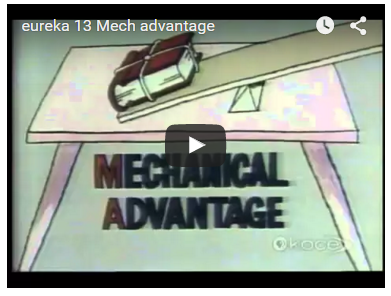
Introduction
Mechanical advantage (MA) is the ratio of the force neede to do a task without any aid, to the force needed to do a task with aid. Common tools that give mechanical advantage are ramps, pulleys, and levers. The most common way of calculating mechanical advantage is to determine the amount of force it takes to do a task unaided, by drawing a free body diagram, and then calculating how much force it takes to do the same task, again, by drawing a free body diagram and carefully summing your forces. A common mistake people make is with pulleys. The number of pulleys is not necessarily equal to the mechanical advantage.
Text/Videos
Here is a physics site for non-physics people that has a very good explination of mechanical advantage;
For more information on mechanical advantange check out;
It has a through discusion on what is mechanical advantage, what systems produce it, and how to calculate it. Warning: We will not be covering any rotation in PH201. Also, there is a small discusion on work. As we have not covered this yet feel free to ignore it.
Also, check out some the important features of mechanical advantage, and try out some example problems.
Simulations
Pulley system with lots of variables that can be changed and measured.
Another pulley system with less functionality
Additional Studying/Review
Below are a few extra websites. Please feel free to check them out if you still have questions on mechanical advantage.
-
A simple site that looks at mechanical advantage. This site is a good supplemental too, but it does not cover the topic very well, and there is little mention of mechanical advantage itself.
-
Here is an old cartoon discussing Mechanical Advantage(we will not be doing any levers this term);
-
And for the Bill Nye fans this is a video of Bill Nye discussing mechanical advantage:
